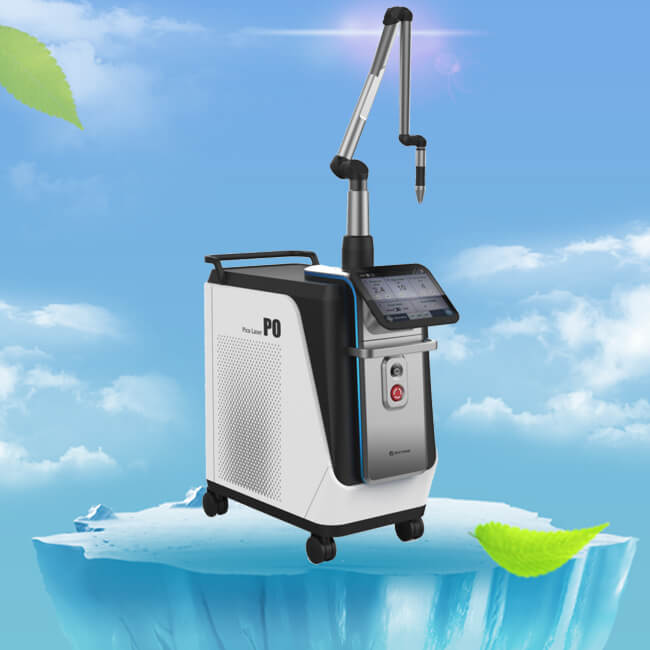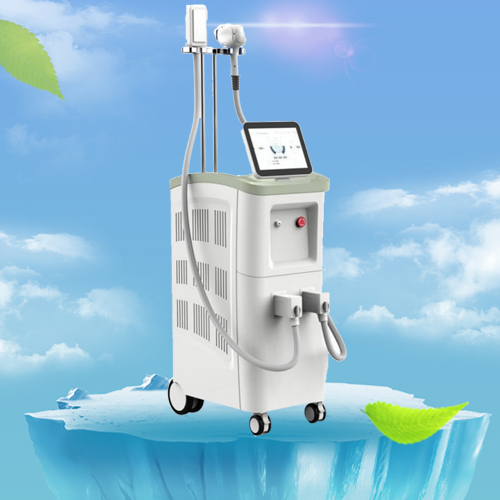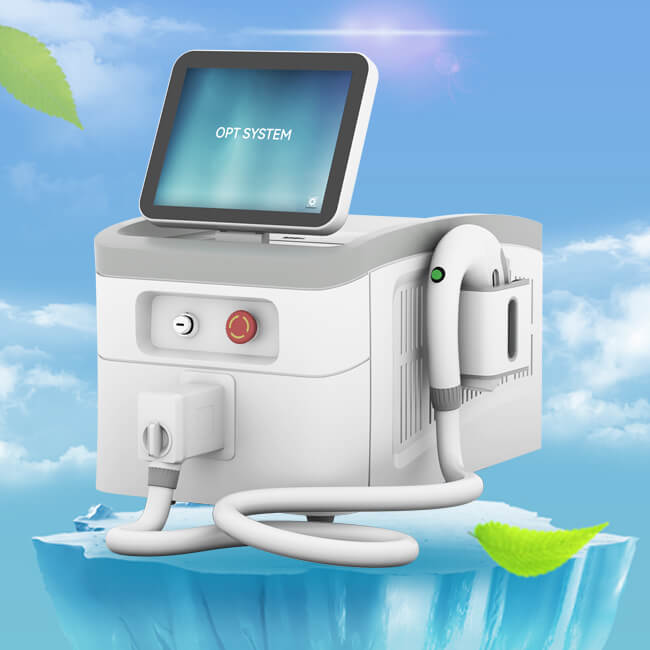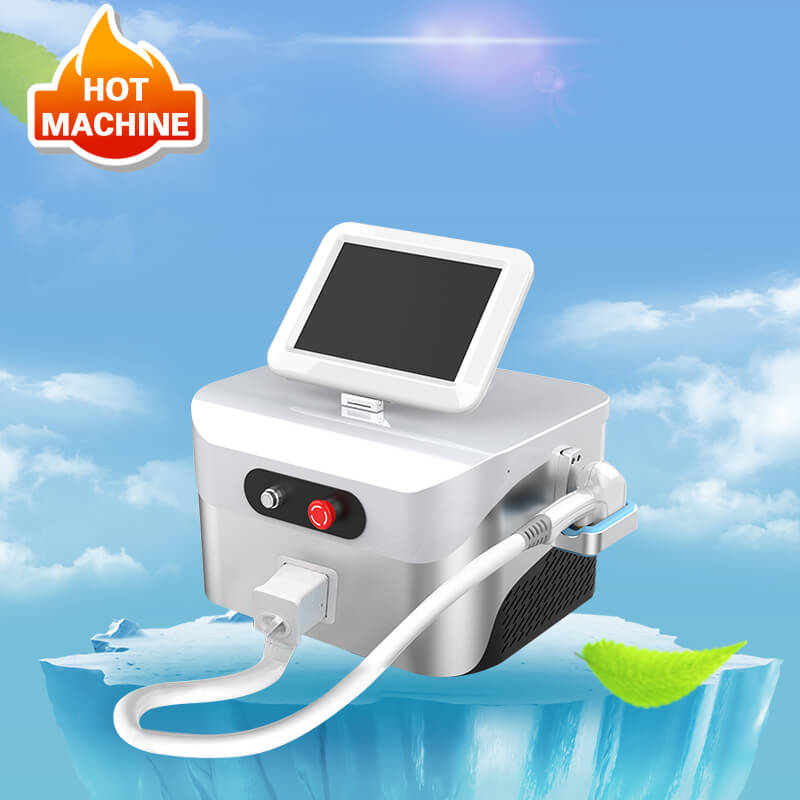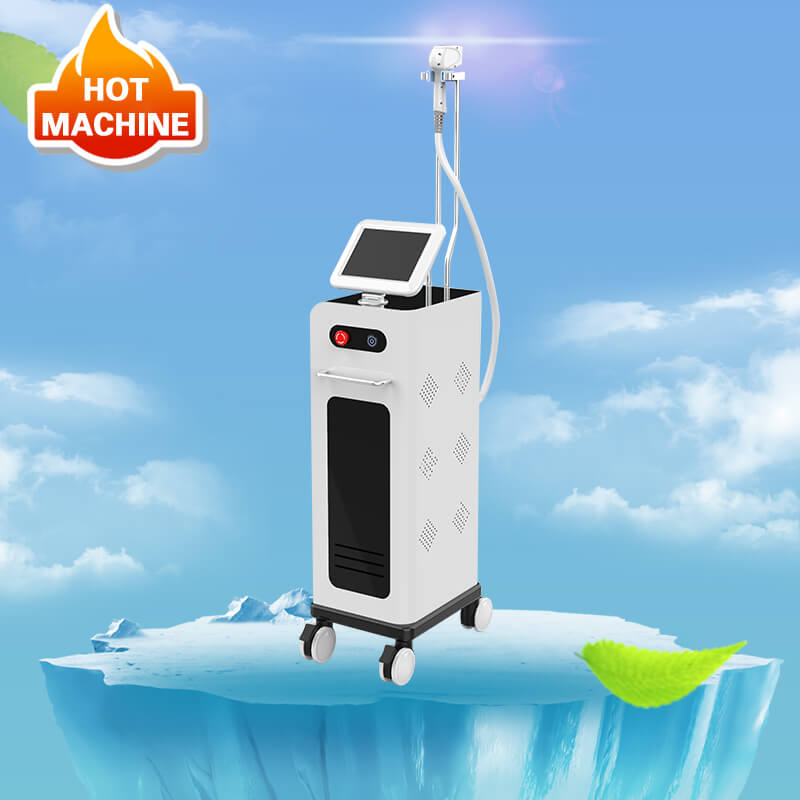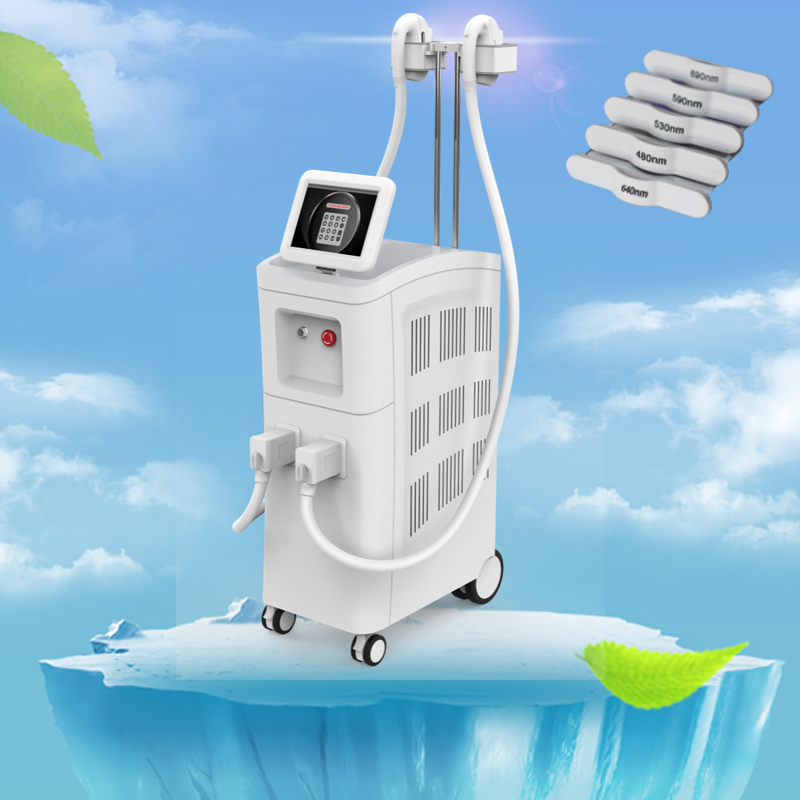Skin Care Before and After Fractional CO2 Laser Treatment
Author:baishilf Time:2025-06-18 13:38:18
This information will help you care for your skin before and after your fractional CO2 laser resurfacing treatment. Some people need many treatments to get the best results. Ask your healthcare provider how many treatments you will need.
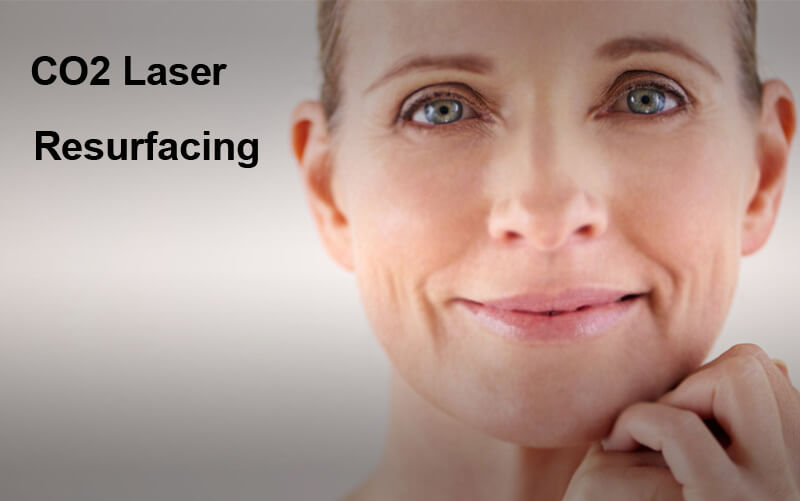
What Is CO2 Laser Skin Resurfacing, and What Does It Do for Your Skin?
The procedure takes advantage of powerful but target-specific laser energy harnessed from carbon dioxide particles, hence the name. CO2 lasers are invisible infrared light beams that selectively vaporize the outer layer of the skin by heating water in its cells. When used by a highly trained laser specialist, CO2 lasers can remove the epidermis, a thin layer comprising the skin’s most superficial region, with minimal damage to deeper tissues. This “micro-injury” to the skin triggers the following processes that ultimately lead to skin healing:
*The intense laser heat burns away deranged collagen strands and contracts loose collagen tissue.
*Stripping the skin’s top surface is a powerful stimulator of the immune system and its inflammatory function. Inflammation results in the release of substances that activate the body’s natural repair mechanisms.
*As healing progresses, epidermal cells grow back, and the skin produces more collagen. The deeper skin layers also repair and renew.
CO2 laser machine for skin therapy is a “resurfacing” treatment, as it strips off the old skin surface and replaces it with a new one with the following visible improvements:
*Superficial imperfections like unwanted pigment and fine lines go away, improving skin tone and texture.
*Deep blemishes like coarse wrinkles and acne scars are markedly reduced.
*The skin is tighter and firmer from enhanced collagen formation, contraction, and remodeling.
*These dynamic skin changes may continue for up to a year after the treatment. So, at the end of your recovery and even beyond, your skin will look younger, smoother, and more even-toned.
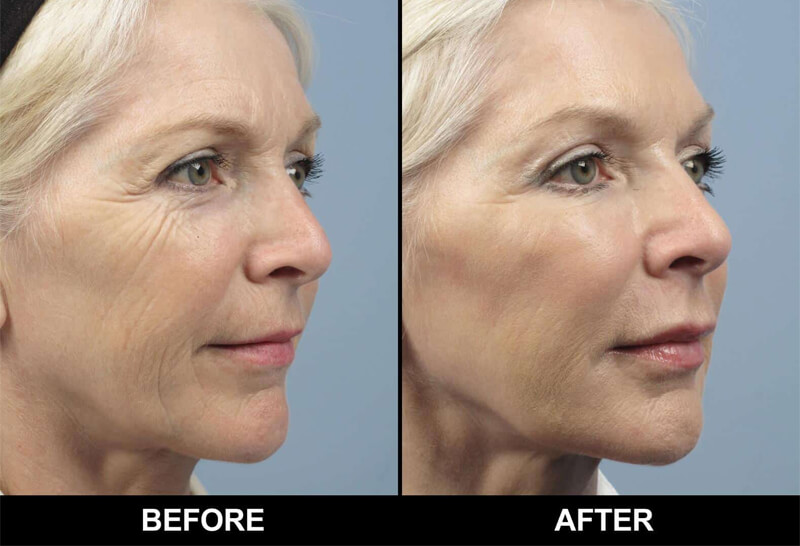
What Is the Difference Between Conventional and Fractional CO2 Laser Resurfacing?
Traditional CO2 laser equipment produces wide beams of light, creating larger areas of skin injury and causing more inflammation. Although experts believe cosmetic improvement is greatest with increased inflammation, some patients may not tolerate some of the side effects of conventional CO2 laser resurfacing.
Meanwhile, fractional CO2 laser treatment is a gentler alternative that delivers thin columns of laser light to the skin instead of wide beams. A single pass of the CO2 fractional laser machine equipment creates multiple micro-sized injuries rather than one large area of damage. This approach reduces laser heat injury and its side effects. Additionally, the simultaneous activation of multiple mini-repair sites leads to faster recovery.
Both traditional and fractional CO2 laser treatments require pain medication to ensure patient comfort during sessions. Local anesthesia is often given, though some individuals need sedation or more potent forms of pain control. Treatment regimens usually require only 1-2 sessions, depending on problem severity.
Skin care before CO2 laser treatment
It’s important that you avoid tanning or heavy sun exposure. Use a broad-spectrum sunscreen (mineral titanium dioxide or zinc oxide) every day for 4 weeks before your treatment. SPF30 or above.
Do not use medications that cause sun sensitivity (such as doxycycline or minocycline) for at least 3 days before treatment. Tell your care team if you are currently taking any antibiotics.
If you have a history of herpes (such as oral cold sores or genital) or shingles in your treatment area, let your healthcare provider know. Your healthcare provider may want you to start an antiviral medication (such as valacyclovir or acyclovir) as directed. This is usually 2 days before treatment and continues after your CO2 laser treatment for the days prescribed.
Tell your care team if you have micro bladed eyebrows or a lip liner tattoo. It’s also important to eat and drink before your procedure to prevent dehydration.
Skin care after CO2 laser treatment
After CO2 laser treatment, it usually takes about 1 to 2 weeks for your skin to heal. Your skin will be very sensitive during this time. Follow the guidelines below to help your skin heal and prevent infection.
Once your CO2 laser treatment is done, your nurse will give you an ice pack to cover the treated area. Hold the ice pack on the treated area for 15 minutes. This will help reduce swelling and make you more comfortable.
Before you leave, your nurse will cover the treated area with petroleum jelly (Vaseline®) or an antibacterial cream such as mupirocin (Bactroban®). Your treated area will also be covered with a bandage. You will change this dressing multiple times a day according to the directions we give you.
General tips:
*Do not wear makeup on the treated area until it’s completely healed.
*Avoid exposing the treated area to the sun until it’s completely healed. If you need to be in the sun, use a mineral sunscreen of at least SPF 30 or wear clothing or a hat that protects the treated area from the sun.
*If you have a history of facial herpes (cold sores), you should take an antiviral medication before and during your treatment. Talk with your healthcare provider that treats this condition about prescribing medication for you. Tell your healthcare team if you develop any new blisters or sores before, during, and after your treatment.
It usually takes many weeks for people to notice that the treated area is healing. During this time, the area may turn a red or blackish color, and a crust may form. The crust should slowly go away 1 to 2 weeks after treatment. Don’t pick at or remove the crust. It will fall off on its own.
Medications after CO2 laser treatment
If you have pain or discomfort, taking acetaminophen (Tylenol®) or NSAIDs (such as Motrin® or Advil®) may help. Ask your healthcare provider how much acetaminophen or NSAIDs you should take.
Don’t take acetaminophen if you have liver problems. Don’t take NSAIDs if you have kidney problems. If you’re having pain but have a history of liver problems or kidney problems, call your healthcare provider’s office.
Call your healthcare provider if you have:
*A fever of 101° F (38.3° C) or higher.
*Chills (shaking).
*Green or yellowish drainage from the treated area.
*Increased pain or discomfort.
*Increased redness or swelling around the treated area.
*Bleeding that doesn’t stop when after applying pressure.
*Pain or discomfort that isn’t helped by pain medication.
Benefits of CO2 Laser Resurfacing
*Reduction in Fine Lines and Wrinkles: The CO2 laser works by removing the outer layers of damaged skin, revealing smoother and healthier skin underneath. This leads to a significant reduction in fine lines, wrinkles, and other signs of aging.
*Improvement in Skin Tone and Texture: CO2 laser resurfacing treatment also helps to improve the tone and texture of your skin by stimulating collagen production. This can help even out any uneven skin tone or texture caused by acne scars or sun damage.
*Treatment for Acne Scars: If you suffer from acne scarring, CO2 laser resurfacing treatment can help reduce their appearance by promoting the growth of new, healthy skin cells.
*Safe and Effective: Experienced dermatologists uses the latest technology to ensure that CO2 laser resurfacing treatment is both safe and effective. Tailor each treatment to the unique needs of patients, ensuring optimal results.
*Minimal Downtime: Unlike traditional laser skin resurfacing treatments, CO2 laser resurfacing treatment has minimal downtime.
Potential Side Effects of CO2 Laser Resurfacing
CO2 laser resurfacing is generally safe. However, unwanted side effects that have been reported following this treatment include the following:
*Laser burns, especially when the wrong equipment settings are used or the patient’s skin is light-sensitive.
*Acne and skin lumps called “milia” due to dressings or ointments.
*Contact dermatitis as a reaction to cleansers, moisturizers, or medications.
*Persistent redness if incorrect laser settings are used.
*Pigmentation abnormalities, especially in patients with darker skin.
*Increased infection risk due to the skin barrier being compromised.
Bad scars, which may develop when the patient is scarring-prone or the procedure is performed with poor technique.
*Aggravation of a previous lower eyelid surgery.
*Visual problems if eye protection is inadequate.
The thing is, these complications have been reported far more frequently when an inexperienced or unlicensed individual performs CO2 laser therapy—a complex medical procedure. In contrast, dermatologists rarely cause such issues due to their advanced medical training. You can reduce your risk of developing unwanted side effects by entrusting this facial rejuvenation treatment only to a board-certified dermatologist with extensive laser expertise.
Who Should Not Receive CO2 Laser Resurfacing Treatment?
Modern CO2 laser equipment and techniques make the procedure adaptable. While patients with fair complexion are the ideal candidates, a laser specialist can skillfully adjust instrument settings to make the treatment suit various skin types.
Still, not everybody is a good candidate for CO2 laser resurfacing. The following conditions or situations can make this therapy inappropriate for you:
*Ongoing inflammation or infection in the treatment area.
*Continuing oral isotretinoin therapy.
*Tendency to scar badly.
*Having skin of color and a positive CO2 laser spot test, indicating an increased risk of inflammation-induced hyperpigmentation.
*Conditions that impair healing, such as collagen disorders, immunodeficiency, diabetes mellitus, and malnutrition.
*Recent chemical peel or UV exposure.
Your specialist may recommend other treatments in the presence of these factors and other concerns they may elicit during your medical evaluation.
CO2 Laser Treatment Is Certainly Worth It
CO2 laser resurfacing therapy has many advantages as a standalone procedure, including optimal aesthetic outcomes, even for certain severe skin conditions. Fractionation allows providers to reduce patients’ laser heat exposure and the risk of unwanted side effects. Combining this therapy with other procedures further enhances its effectiveness and safety.
However, CO2 laser treatment is not for everyone, which makes patient examination crucial. While adhering to the recommended pre- and post-treatment care measures is critical to your therapy’s success, the fact of the matter is that the outcomes of your cosmetic procedures greatly depend on your provider’s skill, not only in performing these treatments but also in determining your suitability, monitoring your recovery, and addressing potential complications.
Bottom line, a huge part of the success of your CO2 laser resurfacing therapy depends on who you entrust it to. So trust only a highly trained laser specialist to ensure the best results.





